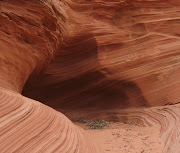
Widespread use of household and commercial aerosols, containing mainly chlorofluorocarbons (CFC), till the late 1990s, led to significant ozone depletion, putting the public health at
risk. The production of CFC was phased out across the world in accordance with the Montreal Protocol, signed by 191 countries.
Studies in the past few years found that ozone depletion has largely halted and is expected to completely reverse. As a consequence, the climate in the southern hemisphere may change, affecting climate elsewhere.
“We were surprised to find that the closing of the ozone hole, expected to occur in the next 50 years or so, shows significant effects on the global climate,” says Lorenzo M. Polvani, one of the two principle investigators involved in the study and a professor of applied physics and applied mathematics.

Vagaries of the Wind will determine the course of environmental history as heated winds will melt polar ice caps further making seal levels rise. Winter actually helps increase the ozone layer depth or thickness. Recent warmer winters did not afford the type of protection needed. Earth can't catch up as the circulation patters of the wind is slow moving. Mega props to Sweden for being the first to make outlaws out of aerosol sprays in 1978. The hole in the Antarctic ozone layer was found in 1985. That put an emphasis on getting the Montreal Protocol into effect by implementing on 1 January, 1989 an international project plan to phase out all substances dangerous to the Earth's ozone layer. Capitalists cried, the current Bush mal-administration denied and issue and to this day the wails are still heard, but the winds of change are sweeping through.
Scientists from a multitude of disciplines are collecting the evidence in research predicated on looking at all future effects of climate change, negligible and catastrophic as a result of global warming. It is a cool look that the known existence of the ozone layer is less than 80 years old, discovered by a British physicist, Sidney Chapman. Now, science is focused like a laser beam on how to maintain it as it is the layer that provides a protective filter from the Sun's most harmful UV radiation starting at an altitude of 35 km . Since DNA is extra sensitive to UV, all life on the planet suffers the effects. To sum it up, all the dirty pollution sent upwards burnt a giant hole in the layer over the polar ice caps allowing ultraviolet rays to beam straight down with impunity."The winds drive everything," says study author Lorenzo Polvani, an atmospheric scientist at Columbia University, "locations of storms, dry zones and deserts, the ice and the ocean circulation as well as the carbon uptake of the oceans." For decades, these winds have been speeding up near Antarctica; repairing the ozone would weaken the winds, he says, and shift them back toward the equator, affecting weather in the entire Southern Hemisphere, including Antarctica as well as Australia, parts of Africa and South America.
 Going green requires an intense amount of diplomacy as first world nations bitterly cling to an old business model while putting a veneer of green actions on display. The rising cost of gas/fossil fuels may do more to green the planet. Ah, the politics is especially tricky as a movement born of necessity must adapt and adopt a means to communicate the message to a massive audience, with literally, everybody's skin in the game. Michael Shellenberg and Ted Nordhaus are not ginger or shy about blasting through old political paradigms in Break Through: From the Death of Environmentalism to the Politics of Possibility.
Going green requires an intense amount of diplomacy as first world nations bitterly cling to an old business model while putting a veneer of green actions on display. The rising cost of gas/fossil fuels may do more to green the planet. Ah, the politics is especially tricky as a movement born of necessity must adapt and adopt a means to communicate the message to a massive audience, with literally, everybody's skin in the game. Michael Shellenberg and Ted Nordhaus are not ginger or shy about blasting through old political paradigms in Break Through: From the Death of Environmentalism to the Politics of Possibility.










No comments:
Post a Comment